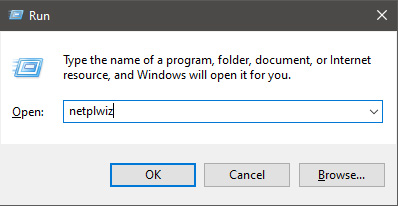
Netflix was one that made streaming service standard and even after some stumbles even today it is still a respected service.
So in that spirit, we are bringing you the list of all new and old movies and TV series releasing to NETFLIX this September.
September 1
Turning Point: 9/11 and the War on Terror — NETFLIX DOCUMENTARY
How to Be a Cowboy — NETFLIX ORIGINAL
Agatha Christie’s Crooked House (2017)
Anjaam (1994)
Barbie: Big City Big Dreams (2021)
Brave Animated Series (Season 1)
Crocodile Dundee in Los Angeles (2001)
Green Lantern (2011)
House Party (1990)
El Patron, radiografia de un crimen / The Boss: Anatomy of a Crime (2014)
HQ Barbers (Season 1)
Letters to Juliet (2010)
Level 16 (2018)
Los Carcamales / Oldsters (Season 1)
Kid-E-Cats (Season 2)
Kuroko’s Basketball (Season 3)
Marshall (2017)
Welcome Home: Roscoe Jenkins (2008)
September 2
Afterlife of the Party — NETFLIX FILM
Q-Force — NETFLIX ORIGINAL
The Guardian
September 3
Dive Club (Season 1) — NETFLIX ORIGINAL
Money Heist (Season 5) — NETFLIX ORIGINAL
Sharkdog (Season 1) — NETFLIX FAMILY
Worth (2021) — NETFLIX ORIGINAL
September 5
Bunk’d (Season 5)
September 6
Countdown: Inspiration 4 Mission to Space (Season 1 – Episodes 1 & 2) — NETFLIX DOCUMENTARY
Shadow Parties (2021)
September 7
Kid Cosmic (Season 2) — NETFLIX ORIGINAL
Octonauts: Above & Beyond (Season 1) — NETFLIX ORIGINAL
On The Verge (Season 1) — NETFLIX ORIGINAL
UNTOLD: Breaking Point — NETFLIX DOCUMENTARY
If I Leave Here Tomorrow: A Film About Lynyrd Skynyrd (2018)
September 8
Into the Night (Season 2) — NETFLIX ORIGINAL
JJ + E — NETFLIX FILM
The Circle (Season 3) — NETFLIX ORIGINAL
Show Dogs (2018)
September 9
Blood Brothers: Malcolm X & Muhammad Ali — NETFLIX DOCUMENTARY
The Women and the Murderer (2021) — NETFLIX DOCUMENTARY
September 10
Firedrake the Silver Dragon (2021) — NETFLIX ORIGINAL
Metal Shop Masters — NETFLIX ORIGINAL
Kate — NETFLIX FILM
Pokemon Master Journey: The Series (Part 1) — NETFLIX ANIME
Prey — NETFLIX FILM
Lucifer (Season 6) — NETFLIX ORIGINAL
Lucifer season 6 poster cast
September 13
Crime Stories: India Detectives (Season 1) — NETFLIX DOCUMENTARY
September 14
You vs. Wild: Out Cold — NETFLIX FILM
The World’s Most Amazing Vacation Rentals — NETFLIX ORIGINAL
September 15
Countdown: Inspiration4 Mission to Space (Season 1 – Episodes 3 & 4) — NETFLIX DOCUMENTARY
Too Hot to Handle Latino — NETFLIX ORIGINAL
Nailed It! — NETFLIX ORIGINAL
Schumacher — NETFLIX DOCUMENTARY
September 16
Safe House (2012)
Birth of the Dragon (2017)
He-Man and the Masters of the Universe (Season 1) — NETFLIX ORIGINAL
My Heroes Were Cowboys (2021) — NETFLIX DOCUMENTARY
September 17
Chicago Party Aunt — NETFLIX ORIGINAL
Sex Education (Season 3) — NETFLIX ORIGINAL
Tayo and Little Wizards (Season 1) — NETFLIX FAMILY
The Stronghold (2020) — NETFLIX FILM
September 22
Dear White People (Season 4) — NETFLIX ORIGINAL
Confessions of an Invisible Girl — NETFLIX FILM
September 23
A StoryBots Space Adventure (2021) — NETFLIX ORIGINAL
September 24
Ganglands (Season 1) — NETFLIX ORIGINAL
Midnight Mass — NETFLIX ORIGINAL
My Little Pony: New Generation — NETFLIX FAMILY
September 28
Aba Twist, Scientist — NETFLIX FAMILY
September 29
Sounds Like Love — NETFLIX FILM
 Run the Windows Memory Diagnostic tool
Run the Windows Memory Diagnostic tool
 Netflix was one that made streaming service standard and even after some stumbles even today it is still a respected service.
So in that spirit, we are bringing you the list of all new and old movies and TV series releasing to NETFLIX this September.
Netflix was one that made streaming service standard and even after some stumbles even today it is still a respected service.
So in that spirit, we are bringing you the list of all new and old movies and TV series releasing to NETFLIX this September.
 In the dialog, type in netplwiz and press ENTER.
In the dialog, type in netplwiz and press ENTER.
 You will find yourself in the User Accounts window, inside deselect Users must enter a user name and password to use this computer. Press OK
You will find yourself in the User Accounts window, inside deselect Users must enter a user name and password to use this computer. Press OK
 Sign in the window will pop up where you will have to type in your password and confirm it in order to start the feature.
Sign in the window will pop up where you will have to type in your password and confirm it in order to start the feature.
 After typing in your password and confirming it, press OK. That's it, next time you wake your computer from hibernation or turn it ON, you will automatically be greeted with a desktop instead of a Windows login screen.
After typing in your password and confirming it, press OK. That's it, next time you wake your computer from hibernation or turn it ON, you will automatically be greeted with a desktop instead of a Windows login screen. 